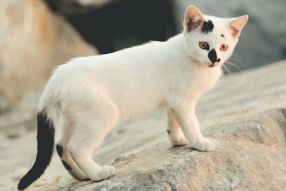2019年全国1卷
D
During the rosy years of elementary school(小学), I enjoyed sharing my dolls and jokes, which allowed me to keep my high social status. I was the queen of the playground. Then came my tweens and teens, and mean girls and cool kids. They rose in the ranks not by being friendly but by smoking cigarettes, breaking rules and playing jokes on others, among whom I soon found myself.
Popularity is a well-explored subject in social psychology. Mitch Prinstein, a professor of clinical psychology sorts the popular into two categories: the likable and the status seekers. The likables’ plays-well-with-others qualities strengthen schoolyard friendships, jump-start interpersonal skills and, when tapped early, are employed ever after in life and work. Then there’s the kind of popularity that appears in adolescence: status born of power and even dishonorable behavior.
Enviable as the cool kids may have seemed, Dr. Prinstein’s studies show unpleasant consequences. Those who were highest in status in high school, as well as those least liked in elementary school, are “most likely to engage(从事) in dangerous and risky behavior.”
In one study, Dr. Prinstein examined the two types of popularity in 235 adolescents, scoring the least liked, the most liked and the highest in status based on student surveys(调查研究). “We found that the least well-liked teens had become more aggressive over time toward their classmates. But so had those who were high in status. It clearly showed that while likability can lead to healthy adjustment, high status has just the opposite effect on us.”
Dr. Prinstein has also found that the qualities that made the neighbors want you on a play date—sharing, kindness, openness—carry over to later years and make you better able to relate and connect with others.
In analyzing his and other research, Dr. Prinstein came to another conclusion: Not only is likability related to positive life outcomes, but it is also responsible for those outcomes, too. “Being liked creates opportunities for learning and for new kinds of life experiences that help somebody gain an advantage, ” he said.
32. What sort of girl was the author in her early years of elementary school?
A. Unkind. B. Lonely. C. Generous. D. Cool.
33. What is the second paragraph mainly about?
A. The classification of the popular.
B. The characteristics of adolescents.
C. The importance of interpersonal skills.
D. The causes of dishonorable behavior.
34. What did Dr. Prinstein’s study find about the most liked kids?
A. They appeared to be aggressive.
B. They tended to be more adaptable.
C. They enjoyed the highest status.
D. They performed well academically.
35. What is the best title for the text?
A Be Nice—You Won’t Finish Last
B. The Higher the Status, the Better
C. Be the Best—You Can Make It
D. More Self-Control, Less Aggressiveness
答案解析:
32. C 根据第一段中的“I enjoyed sharing my dolls and jokes, which allowed me to keep my high social status.”可知,作者在小学早期喜欢分享她的玩具和笑话,这让她保持了高社会地位。因此,作者在小学早期是一个慷慨的女孩。故选C。
33. A 第二段主要讲述了Mitch Prinstein教授将受欢迎的人分为两类:讨人喜欢的和追求地位的人。这是对受欢迎的人进行分类,因此第二段主要关于受欢迎的人的分类。故选A。
34. B 根据第四段中的“the most liked...are ‘most likely to engage in dangerous and risky behavior.’”和第五段中的“We found that the least well-liked teens had become more aggressive over time toward their classmates. But so had those who were high in status. It clearly showed that while likability can lead to healthy adjustment, high status has just the opposite effect on us.”可知,最受欢迎的孩子随着时间的推移变得更加适应健康,而地位高的孩子则相反。因此,Dr. Prinstein的研究发现最受欢迎的孩子似乎更适应。故选B。
35. A 整篇文章讲述了讨人喜欢(likability)和地位(status)对孩子成长的不同影响,指出讨人喜欢与积极的生活结果相关,并且也是这些结果的原因。文章标题应该能够概括这一主题,"Be Nice—You Won’t Finish Last"(友善一点——你不会最后一名)最能体现文章的中心思想,即友善和受欢迎的品质对个人的长远发展是有益的。故选A。






